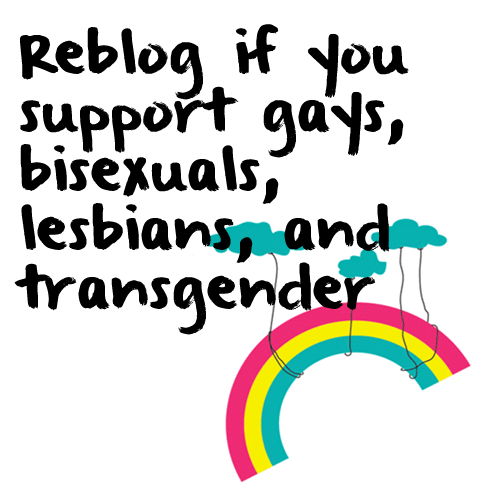Today In Black Excellence: Maya Angelou—a Literature Titan Whose 1969 Memoir Was The First Nonfiction

Today in Black Excellence: Maya Angelou—a literature titan whose 1969 memoir was the first nonfiction bestseller by an African American woman.
“There is no greater agony than bearing an untold story inside you.” —Maya Angelou, I Know Why the Caged Bird Sings.
What was the early life of Maya Angelou?
She became a celebrated writer and Black icon, but it came from a childhood of tragedy. Born on April 4, 1928, in St. Louis, Missouri, Angelou was quickly exposed to racism as a child. Her parents split when she was young, and while visiting her mother, aged eight, she was raped by her mother’s boyfriend: her uncles killed the boyfriend in revenge. These horrors left Angelou mute for five years, as she discussed in an interview with Oprah, a close friend. At age 16, she gave birth and was forced to work grueling jobs to support her son—including fry cook, sex worker, and nightclub performer.
She recounted her traumas to close friend James Baldwin—fellow writer and Black icon. He challenged Angelou to write about her experiences, and she published the wildly successful memoir I Know Why the Caged Bird Sings. It catapulted Angelou to international stardom and was nominated for a National Book Award in 1970. It remained on The New York Times’ paperback nonfiction bestseller list for two years—the longest record in history.
What made her such a Black icon?
Angelou was a close friend of Martin Luther King Jr., who was assassinated on her birthday in 1968. Angelou stopped celebrating her birthday for years afterward. In 1964, Angelou helped another activist friend Malcolm X in founding the Organization of Afro-American Unity.
Spanning over 50 years, she published seven autobiographies, three books of essays, books of poetry, and plays. Her 1971 poetry collection, Just Give Me a Cool Drink of Water ’Fore I Die, was nominated for the Pulitzer Prize. Because of her tireless work in literature and political activism, Angelou became widely respected as a spokesperson for the Black experience, particularly of women. You can even find her legacy in your pocket—she recently became the first black woman to appear on a US quarter.
Original portrait by Tumblr Creatr @inuqo
"I was filled with such deep gratitude while working on this illustration of Maya Angelou. Her talent, creativity, strength, power and resilience is inspiring to us all and I wanted to display how beautiful her Universe was. How important her words and life's journey was because it showed us that no matter how hard we fall, still we can rise".”
—@inuqo
More Posts from Biggerfan1 and Others

@dayum62

Good people.



This is the energy I like to see from allies

She was a great woman.

Today in Black Excellence: Shirley Chisholm, the first African American—and the first woman—to seek nomination for President.
“I want history to remember me... not as the first black woman to have made a bid for the presidency of The United States, but as a black woman who lived in the 20th century and who dared to be herself. I want to be remembered as a catalyst for change in America.”
—Shirley Chisholm
Chisholm wanted to be remembered as a “catalyst for change.” What did she do?
Shirley Anita Chisholm was a politician, educator, and writer. There would be no Barack Obama or Kamala Harris without her—she was a trailblazer in every sense of the word.
Citing her “double-handicap” of being a Black woman, Chisholm initially rejected a political career but became increasingly engaged in fighting racial and gender inequality. She eventually joined the Democratic Party in Bedford-Stuyvesant, Brooklyn, winning a seat in the United States Congress in 1968, and becoming the first Black woman to do so.
What did she achieve in politics?
With a seat at the table, “Fighting Shirley” introduced over 50 pieces of legislation on behalf of the poor, protesting racial and gender inequality. She became a fierce critic of the Vietnam War when opposition to the war was considered radical. Her outspoken assault on injustice earned her few friends in the white political establishment.
While campaigning for the 1972 primaries, Chisholm was allowed only one speech in televised debates and was otherwise blocked from participation. Despite this, students, women, and minorities proved loyal supporters: In 12 primaries, she garnered 152 (10%) of delegates’ votes, despite a poorly financed campaign and widespread political hostility.
The 1972 primaries also displayed her remarkable character, when she chose to visit racist and segregationist Governor George Wallace of Alabama in hospital after a failed assassination attempt.
After retiring from Congress in 1983, Chisholm taught at Mount Holyoke College and co-founded the National Political Congress of Black Women.
Original portrait by Tumblr Creatr @banana-peppers
“It was an honor to create a piece celebrating Shirley Chisholm. She was the first Black woman elected to Congress and to seek a major party nomination for presidency. Her trailblazing career is truly inspiring and I wanted to capture her power, her bravery and her magic. Her motto Unbought and Unbossed implores us to forge our own path no matter what obstacles try to stand in our way."
—@banana-peppers
I loved Leslie Jordan. What a sweet and talented man.

😑 I can't




-
 witchybookaddict reblogged this · 4 months ago
witchybookaddict reblogged this · 4 months ago -
 lilmumabd liked this · 4 months ago
lilmumabd liked this · 4 months ago -
 hued-man-power liked this · 4 months ago
hued-man-power liked this · 4 months ago -
 jcapeverde reblogged this · 4 months ago
jcapeverde reblogged this · 4 months ago -
 jcapeverde liked this · 4 months ago
jcapeverde liked this · 4 months ago -
 gh0st0rch1d liked this · 6 months ago
gh0st0rch1d liked this · 6 months ago -
 loveconquersnothing reblogged this · 7 months ago
loveconquersnothing reblogged this · 7 months ago -
 legendaryartisanmusic liked this · 8 months ago
legendaryartisanmusic liked this · 8 months ago -
 mltdmlks liked this · 9 months ago
mltdmlks liked this · 9 months ago -
 masterofthemysticartz reblogged this · 11 months ago
masterofthemysticartz reblogged this · 11 months ago -
 masterofthemysticartz liked this · 11 months ago
masterofthemysticartz liked this · 11 months ago -
 fifinesse liked this · 11 months ago
fifinesse liked this · 11 months ago -
 calmmyfears reblogged this · 1 year ago
calmmyfears reblogged this · 1 year ago -
 calmmyfears liked this · 1 year ago
calmmyfears liked this · 1 year ago -
 patchyourbrokenwings liked this · 1 year ago
patchyourbrokenwings liked this · 1 year ago -
 witchybookaddict reblogged this · 1 year ago
witchybookaddict reblogged this · 1 year ago -
 rvdcreates liked this · 1 year ago
rvdcreates liked this · 1 year ago -
 reneestjohn05 reblogged this · 1 year ago
reneestjohn05 reblogged this · 1 year ago -
 justazzi reblogged this · 1 year ago
justazzi reblogged this · 1 year ago -
 fiction-bks reblogged this · 1 year ago
fiction-bks reblogged this · 1 year ago -
 esplove reblogged this · 1 year ago
esplove reblogged this · 1 year ago -
 kaimynameis reblogged this · 1 year ago
kaimynameis reblogged this · 1 year ago -
 darkmatterblade reblogged this · 1 year ago
darkmatterblade reblogged this · 1 year ago -
 hauntedradiotower liked this · 1 year ago
hauntedradiotower liked this · 1 year ago -
 plutoniandepths liked this · 1 year ago
plutoniandepths liked this · 1 year ago -
 worldoffood23 reblogged this · 1 year ago
worldoffood23 reblogged this · 1 year ago -
 bad-bitch-05-4ever reblogged this · 1 year ago
bad-bitch-05-4ever reblogged this · 1 year ago -
 bad-bitch-05-4ever liked this · 1 year ago
bad-bitch-05-4ever liked this · 1 year ago -
 hamta liked this · 1 year ago
hamta liked this · 1 year ago -
 drewboigenius reblogged this · 1 year ago
drewboigenius reblogged this · 1 year ago -
 cherryghostgeneral liked this · 1 year ago
cherryghostgeneral liked this · 1 year ago -
 mzxtoo liked this · 1 year ago
mzxtoo liked this · 1 year ago -
 ishtarsdagger liked this · 1 year ago
ishtarsdagger liked this · 1 year ago -
 supernightboy08 liked this · 1 year ago
supernightboy08 liked this · 1 year ago -
 maxtimiii reblogged this · 1 year ago
maxtimiii reblogged this · 1 year ago -
 maxtimiii liked this · 1 year ago
maxtimiii liked this · 1 year ago -
 fafa1k liked this · 1 year ago
fafa1k liked this · 1 year ago -
 nolanluvsbuttcracks reblogged this · 1 year ago
nolanluvsbuttcracks reblogged this · 1 year ago -
 generousapricotshepherdflap liked this · 1 year ago
generousapricotshepherdflap liked this · 1 year ago
